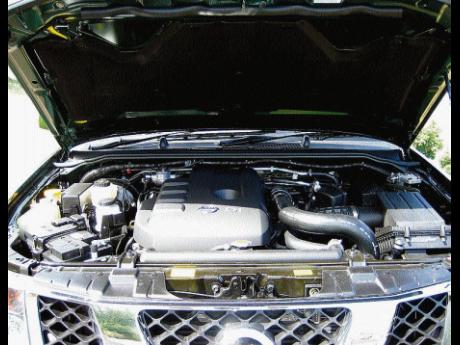Different diesel days - Common Rail system eliminates exhaust, pump issues
Kevin Baxter, Contributor
Growing up in rural Jamaica at a time when there was not many motor vehicles driving through our community, an afternoon game of scrimmage football could be played at five-minute intervals before it was interrupted by a passing motor vehicle.
That vehicle, at times, was either the market truck or bus returning from the city. I can remember us having to wait for what seemed like an eternity for plumes of black smoke to dissipate before the game could be restarted. Our eyes would burn after the vehicle passed and we would often be left feeling nauseous.
Automotives readers can perhaps recall travelling in a vehicle not equipped with air-conditioning, being stuck behind a truck labouring up an incline, and almost left to suffocate by the noxious fumes emanating from its exhaust pipe.
These are images of diesel engines from the past, scenes which are fast fading from our roads (although, for some, not quickly enough). Diesel engines of today are sleek, efficient and technology-enabled machines which rival their gasolene engine counterparts in performance and economy.
The diesel engine of yesteryear consisted of a highly precisioned mechanical injector pump whose job was to deliver pressurised fuel (up to 150 bars) to the injectors. The fuel was ignited by the hot air compression within the cylinders (compression ignition - CI).
The fuel system is considered the heart of the diesel engine, with phasing and calibrating being two critical adjustments that determine fuel efficiency. The diesel mechanic who specialised in perfecting these processes was invaluable to the vehicle's maintenance. Sadly, these diesel mechanics are fast becoming redundant in the flood of technology that continues to sweep the automotive landscape, and will have to retool themselves in order to remain current and relevant among the existing and emerging technology.
Common rail direct fuel injection
Modern diesel engines are equipped with common rail direct fuel injection systems. This paradigm shift is synonymous to the carburettor being phased out by the electronic fuel injection systems on petrol engines.
Diesel engines of old operated on a simple mechanical method to introduce fuel into the cylinder for combustion. This, however, was not always an effective means of sustaining a well-defined spray pattern under varying loads and speeds.
The functionality of the pump was heavily dependent on engine revolutions per minute (rpm). Therefore, when trucks equipped with the system are going up an incline under increased rpm, the pump delivers more fuel to the injectors than can be burnt and the result is black, sooty, eye-irritating smoke emitted from theexhaust.
The prevailing issue of cold starting was mitigated with glow plugs which preheat the incoming air, priming it for combustion within the cylinders. Failing this preparation, it would take a longer time for the vehicle to start, especially if the ambient air was at lower temperatures.
A common rail diesel engine is a revolution from those inefficient processes. It capitalises on fuel and engine management systems that reduces engine noise and generate less emission, while providing excellent fuel consumption. A high pressure fuel rail, along with computer controlled injectors, is integral to this system.
Unlike its predecessor, whose job was to time delivery and discharge fuel, the electronic fuel pump's only task is to supply the rail with fuel of up to 2,500 bars. This fuel pressure and quantity is accumulated independent of the engine speed or load.
Fuel injectors are connected to the fuel rail and sit directly above the piston within the cylinder head. The injectors are actuated through piezo crystals (which expand when an electric charge is applied) which move the needle in tiny increments, releasing the pressurised fuel via its very fine orifice.
The engine computer controls the injector and determines the precise timing and duration of its spray patterns during an injection cycle. This fuel metering allows deliberate and consistent mists of fuel to be admitted to the combustion chamber, which contributes to complete vaporisation and combustion under varying speeds and loads.
The evolution of diesel injection is critical for common rail diesel engines utilising regular diesel fuel rather than Ultra-Low Sulphur Diesel (ULSD). The high pressures within the common rail system allow very fast multiple firings within each combustion cycle.
These injectors have smaller clearances and are sensitive and more susceptible to problems arising from deposits. These deposits may interfere with the injector's operation and lead to reductions in the amount of fuel delivery and distorted spray patterns.
This will ultimately impact the combustion process, which will affect emission, fuel economy and power output.
Notwithstanding, sulphur content is a very necessary component in diesel fuel to aid lubrication and fight microorganisms. When considering switching to ULSD, the operator of a diesel vehicle is encouraged to monitor the fuel system for leaks or clogging of the fuel filter and seek advice from a certified automotive technician.
Kevin Baxter is acting managing director of the Jamaican-German Automotive School on Maxfield Avenue, St Andrew.

